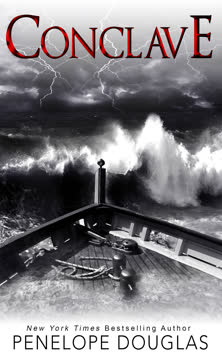Plot Summary
Old Friends, New Enemies
Tate and Jared were once inseparable, best friends who shared everything. However, as they entered high school, Jared inexplicably turned against Tate, becoming her tormentor. His relentless bullying made her life unbearable, spreading rumors and playing cruel pranks. The betrayal was a mystery to Tate, who was left to navigate the treacherous waters of high school alone, feeling isolated and humiliated. This chapter sets the stage for the emotional turmoil and tension that defines their relationship, highlighting the pain of lost friendship and the confusion of unprovoked hostility.
The Year in France
Overwhelmed by Jared's bullying, Tate decides to spend a year in France, hoping to escape the toxic environment and find some peace. This year abroad becomes a transformative period for her, allowing her to gain confidence and perspective. Away from Jared's shadow, Tate begins to rediscover herself, building resilience and preparing to face her past. The distance provides clarity, and she returns home determined not to let Jared control her life any longer. This chapter emphasizes personal growth and transformation and the importance of self-discovery.
Return and Resolve
Back from France, Tate is no longer the timid girl who left. She is ready to confront Jared and reclaim her life. Her return is marked by a new resolve to stand up to him, refusing to be a victim any longer. As she navigates her senior year, Tate's interactions with Jared are charged with tension, but she is determined to fight back. This chapter highlights her transformation and the shift in power dynamics between her and Jared, setting the stage for their evolving relationship.
Confrontations and Confessions
As Tate stands her ground, the tension between her and Jared reaches a boiling point. Their confrontations are intense, filled with anger and unresolved emotions. During these heated exchanges, Jared's facade begins to crack, revealing glimpses of vulnerability and hidden feelings. Tate starts to see that there might be more to Jared's behavior than she initially thought. This chapter delves into the complexity of their relationship, exploring themes of misunderstanding and the impact of past traumas.
Unraveling the Past
Determined to understand Jared's actions, Tate digs into their past, uncovering secrets that shed light on his behavior. She learns about the personal struggles and family issues that have shaped Jared, realizing that his bullying was a misguided attempt to cope with his own pain. This revelation changes Tate's perspective, allowing her to empathize with Jared while grappling with her own feelings of betrayal and hurt. This chapter underscores the importance of understanding and forgiveness in healing broken relationships.
The Truth Revealed
With the truth out in the open, Tate and Jared begin to communicate honestly, breaking down the walls that have kept them apart. They confront their feelings, acknowledging the deep connection that still exists between them. This newfound understanding paves the way for reconciliation, as they both work through their past grievances and start to rebuild their friendship. This chapter highlights the power of communication and the possibility of redemption, even after deep-seated hurt.
Healing and New Beginnings
With their relationship mended, Tate and Jared embark on a new chapter, free from the burdens of their past. They learn to support each other, embracing the possibility of a future together. Tate's journey of self-discovery and empowerment comes full circle, as she finds strength in forgiveness and love. This chapter concludes the story on a hopeful note, emphasizing themes of growth, healing, and the enduring power of friendship and love.
Characters
Tate
Tate is a strong-willed young woman who evolves from a victim of bullying to a confident individual ready to confront her past. Her journey is one of self-discovery and empowerment, as she learns to stand up for herself and seek understanding rather than revenge. Her relationship with Jared is central to her development, as she navigates the complexities of love, betrayal, and forgiveness.
Jared
Jared is initially portrayed as the antagonist, a former friend turned bully. However, as the story unfolds, his character is revealed to be more nuanced, driven by personal struggles and a troubled family life. His journey is one of redemption, as he confronts his actions and seeks to make amends with Tate. Jared's character highlights the impact of unresolved trauma and the possibility of change.
K.C.
K.C. is Tate's best friend, providing support and encouragement throughout her struggles. She is a constant presence in Tate's life, offering a listening ear and a shoulder to lean on. K.C.'s unwavering loyalty and friendship are crucial to Tate's journey, underscoring the importance of having a strong support system.
Madoc
Madoc is Jared's close friend, often participating in the bullying of Tate. While initially seen as an antagonist, his character adds depth to the story, revealing the influence of peer pressure and the complexities of friendship. Madoc's interactions with Tate and Jared provide insight into the group dynamics and the challenges of breaking free from negative influences.
Jax
Jax is Jared's younger brother, who plays a pivotal role in revealing Jared's softer side. He provides a different perspective on Jared's character, showing the caring and protective aspects of his personality. Jax's presence in the story highlights the importance of family and the impact of sibling relationships on personal growth.
Plot Devices
Bullying and Redemption
Bullying is a key plot device in the story, serving as the catalyst for Tate's transformation and the tension between her and Jared. The narrative explores the impact of bullying on both the victim and the perpetrator, delving into themes of redemption and forgiveness. This device is crucial in highlighting the complexities of human behavior and the possibility of change.
Misunderstanding and Communication
Misunderstanding is a recurring plot device that drives the conflict between Tate and Jared. Their inability to communicate effectively leads to years of animosity and pain. As the story progresses, the resolution of these misunderstandings becomes central to their reconciliation, emphasizing the importance of open and honest communication in healing relationships.
Personal Growth and Transformation
The story heavily relies on the theme of personal growth, as both Tate and Jared undergo significant transformations. Their journeys of self-discovery and empowerment are central to the narrative, highlighting the importance of resilience and the ability to overcome adversity. This plot device underscores the potential for change and the power of personal agency.
Analysis
"Bully" by Penelope Douglas delves into the complexities of high school relationships, exploring themes of trauma, redemption, and personal growth. The story highlights the impact of bullying on both the victim and the perpetrator, emphasizing the importance of understanding and forgiveness in healing broken relationships. Through the characters of Tate and Jared, the narrative examines the power dynamics of friendship and love, showcasing the potential for change and the enduring strength of the human spirit. The book serves as a reminder of the importance of communication and empathy in overcoming past grievances and building a brighter future.
Last updated:
FAQ
Synopsis & Basic Details
What is Bully about?
- Enemies-to-lovers romance: Bully centers on Tate and Jared, former best friends turned enemies, whose complex relationship evolves amidst high school drama and personal struggles.
- Bullying and its aftermath: The story explores the impact of Jared's relentless bullying on Tate, and her journey to reclaim her life and confront her tormentor.
- Secrets and redemption: As the story unfolds, hidden truths about Jared's motivations are revealed, leading to a path of understanding, forgiveness, and potential reconciliation.
Why should I read Bully?
- Emotional intensity: The novel offers a rollercoaster of emotions, from the pain of betrayal to the hope of redemption, making it a compelling and engaging read.
- Complex characters: Both Tate and Jared are flawed and multi-layered, making their journey relatable and their relationship dynamic and intriguing.
- Exploration of trauma: Bully delves into the psychological impact of bullying and the process of healing, offering a nuanced perspective on these sensitive issues.
What is the background of Bully?
- Contemporary high school setting: The story is set in a typical American high school, capturing the social dynamics, peer pressure, and emotional intensity of that environment.
- Focus on personal struggles: The narrative delves into the characters' personal and family issues, highlighting how these factors influence their behavior and relationships.
- No specific historical context: The story is not tied to any particular historical event, allowing it to focus on the universal themes of bullying, friendship, and forgiveness.
What are the most memorable quotes in Bully?
- "He might not have changed, but I have.": This quote encapsulates Tate's transformation and her determination to no longer be a victim, marking a pivotal shift in the narrative.
- "We were best friends once. Then he turned on me and made it his mission to ruin my life.": This quote highlights the core conflict and the deep betrayal that fuels the story's tension.
- "I'm done hiding from him now, and there's no way in hell I'll allow him to ruin another year.": This quote showcases Tate's newfound strength and her resolve to confront Jared, setting the stage for their evolving relationship.
What writing style, narrative choices, and literary techniques does Penelope Douglas use?
- First-person perspective: The story is told from Tate's point of view, allowing readers to deeply connect with her emotions and experiences, enhancing the emotional impact.
- Dual timeline: The narrative shifts between the present and flashbacks, gradually revealing the history of Tate and Jared's relationship and the reasons behind their conflict.
- Intense dialogue: Douglas uses sharp, emotionally charged dialogue to convey the tension and complex feelings between the characters, driving the narrative forward.
Hidden Details & Subtle Connections
What are some minor details that add significant meaning?
- Jared's car: The description of Jared's car as a symbol of his power and control, later becoming a space for vulnerability and intimacy, highlights his character's complexity.
- Tate's art: Tate's artistic talent, initially suppressed by her fear of Jared, becomes a symbol of her self-expression and her journey towards reclaiming her identity.
- The significance of the lake: The lake, a place of childhood memories for Tate and Jared, becomes a recurring location for pivotal moments, symbolizing their shared history and the possibility of reconciliation.
What are some subtle foreshadowing and callbacks?
- Early mentions of Jared's family issues: Seemingly throwaway lines about Jared's home life foreshadow the deeper reasons behind his behavior, adding layers to his character.
- Recurring childhood games: References to games they played as children foreshadow the underlying connection and the possibility of rekindling their friendship.
- Tate's initial fear of Jared: Her initial fear, which seems like simple bullying, is later revealed to be rooted in a deeper, more complex emotional connection.
What are some unexpected character connections?
- Jax's role as a bridge: Jared's younger brother, Jax, acts as a bridge between Tate and Jared, revealing Jared's softer side and facilitating their eventual reconciliation.
- K.C.'s unwavering support: K.C.'s loyalty to Tate, while expected, is crucial in highlighting the importance of female friendships and support systems in overcoming trauma.
- Madoc's internal conflict: Madoc's participation in the bullying, while seemingly straightforward, hints at his own internal struggles and the complexities of peer pressure.
Who are the most significant supporting characters?
- K.C., the loyal confidante: K.C. provides unwavering support and a safe space for Tate, highlighting the importance of female friendships in navigating difficult times.
- Jax, the insightful brother: Jax offers a different perspective on Jared, revealing his vulnerabilities and contributing to Tate's understanding of his motivations.
- Madoc, the conflicted friend: Madoc's character adds depth to the story by showcasing the complexities of peer pressure and the challenges of breaking free from negative influences.
Psychological, Emotional, & Relational Analysis
What are some unspoken motivations of the characters?
- Jared's need for control: Jared's bullying stems from a need to control his environment due to his chaotic home life, masking his own insecurities and pain.
- Tate's desire for validation: Tate's initial passivity is driven by a desire to avoid conflict and seek validation, which she later overcomes through self-discovery.
- Both characters' fear of vulnerability: Both Tate and Jared struggle with vulnerability, using anger and avoidance as defense mechanisms, which they eventually learn to overcome.
What psychological complexities do the characters exhibit?
- Jared's internal conflict: Jared's behavior is a manifestation of his internal conflict, torn between his feelings for Tate and his need to maintain a tough exterior.
- Tate's resilience and trauma: Tate's journey showcases the psychological impact of bullying and her resilience in overcoming trauma, highlighting the complexities of healing.
- The impact of family dynamics: Both characters' psychological states are heavily influenced by their family dynamics, revealing the lasting impact of childhood experiences.
What are the major emotional turning points?
- Tate's return from France: Her return marks a significant emotional shift, as she is no longer the timid girl, but a confident young woman ready to confront her past.
- The revelation of Jared's past: The unveiling of Jared's family struggles and motivations is a major turning point, allowing Tate to empathize with him and see beyond his bullying.
- The first honest conversation: The first genuine conversation between Tate and Jared, where they express their true feelings, marks a pivotal moment in their relationship.
How do relationship dynamics evolve?
- From best friends to enemies: The relationship begins with a deep friendship, which is shattered by Jared's betrayal, creating a complex dynamic of hurt and anger.
- From enemies to reluctant allies: As Tate stands up to Jared, their relationship evolves into a tense alliance, marked by confrontations and underlying attraction.
- From allies to potential lovers: Through honest communication and understanding, their relationship transforms into a potential romantic connection, built on forgiveness and mutual respect.
Interpretation & Debate
Which parts of the story remain ambiguous or open-ended?
- The extent of Jared's remorse: While Jared shows remorse, the depth of his regret and the long-term impact of his actions remain somewhat open to interpretation.
- The future of their relationship: The ending suggests a hopeful future, but the specific challenges and triumphs they will face as a couple are left to the reader's imagination.
- The long-term effects of bullying: The story focuses on the immediate aftermath of bullying, but the long-term psychological effects on both Tate and Jared are not fully explored.
What are some debatable, controversial scenes or moments in Bully?
- The initial bullying scenes: The intensity of Jared's bullying can be seen as controversial, raising questions about the portrayal of such behavior in young adult fiction.
- The romanticization of the bully: Some readers may find the romanticization of Jared's character problematic, despite his eventual redemption, sparking debate about the message it sends.
- The speed of forgiveness: The relatively quick reconciliation between Tate and Jared can be seen as unrealistic, raising questions about the complexities of forgiveness and healing.
Bully Ending Explained: How It Ends & What It Means
- Reconciliation and forgiveness: The ending sees Tate and Jared reconcile, highlighting the power of forgiveness and the possibility of healing from past hurts.
- Hope for a future together: The final scenes suggest a hopeful future for Tate and Jared, implying that they have overcome their past and are ready to move forward together.
- Emphasis on personal growth: The ending underscores the importance of personal growth and self-discovery, as both characters have transformed and learned from their experiences.
Review Summary
Bully by Penelope Douglas is a controversial New Adult romance that follows the tumultuous relationship between former friends Tate and Jared. Many readers praise the intense emotions, sexual tension, and character development, while others criticize the glorification of bullying and toxic behavior. The book polarizes opinions, with some finding it addictive and others uncomfortable. Readers appreciate the exploration of complex themes but debate the believability of the characters' actions and motivations. Despite mixed reviews, many fans consider it a defining work in the genre.
Fall Away Series
Similar Books
Download PDF
Download EPUB
.epub digital book format is ideal for reading ebooks on phones, tablets, and e-readers.
























